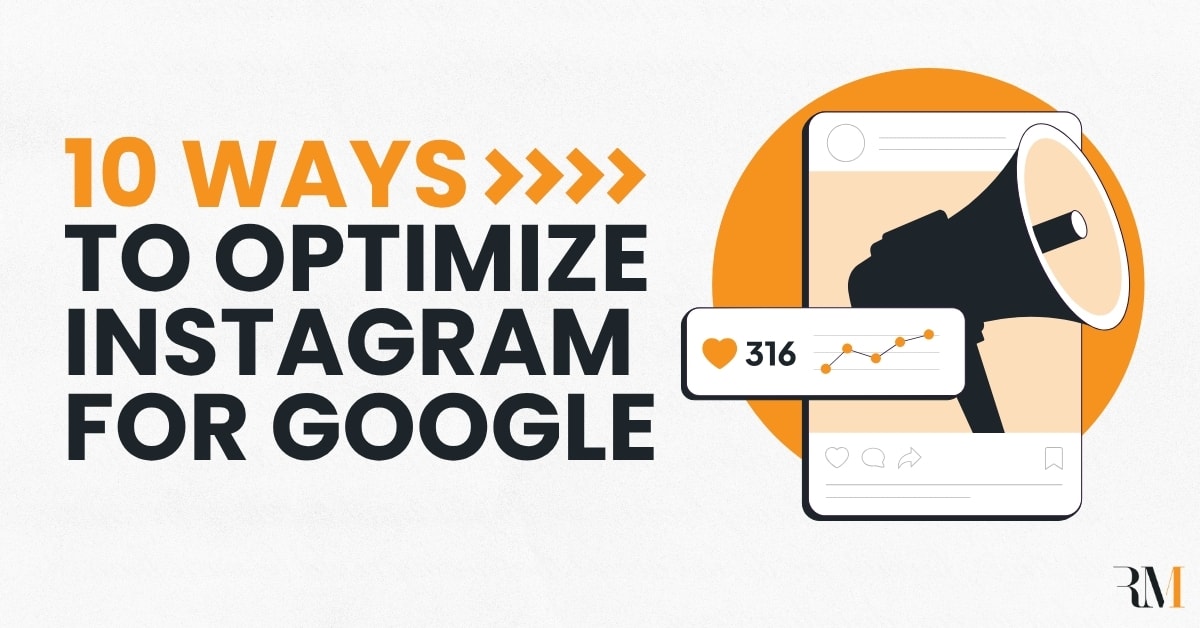10 Ways to Optimize Instagram for Google

As of July 2025, Instagram isn’t just a platform for before‑and‑after visuals or team Reels; it’s a Google‑indexable brand asset. Public posts from Business and Creator accounts (photos, Reels, carousels, captions, bios, and even alt text) can now appear in Google (and Bing) search results, meaning your Instagram presence can directly influence SEO performance, brand visibility, and organic discovery.
In addition, Instagram has introduced a privacy/visibility toggle (“Allow public photos and videos to appear in search engine results”) for professional accounts. As such, if you want your content indexed, make sure it’s enabled (and your profile is public).
Below, our medical digital marketing experts have outlined 10 practical, no‑fluff ways to optimize your Instagram for Google – the same playbook we’re using with clients right now. Read on to learn more!
1. Enable Search Indexing (And Stay Public)
Head to Settings → Privacy → External/Search Engine visibility and toggle on “Allow public photos and videos to appear in search engine results.” This control currently applies to public Business and Creator accounts (not private or under‑18 accounts).
2. Put Keywords (Not Hashtag Strings) in Your Name and Bio
Google can read (and rank) your profile, so help it understand who you are, what you do, and where you do it. Include your specialty + city (e.g., “Rosemont Media – Medical Digital Marketing | San Diego”), core services, and consistent NAP data to reinforce entity signals across your site, GBP, and schema.
3. Write Captions like Micro Blog Posts
Because captions are now indexable, treat them as semantic content: answer the exact questions patients ask (“How long does mommy makeover recovery take?”), use natural long‑tail keywords, and close with a clear CTA. This makes your posts more discoverable in Google and more useful in‑app.
4. Add Custom Alt Text (For Accessibility and Search Context)
Instagram lets you write your own alt text. Use it to accurately describe the image/video and add concise, relevant keywords (e.g., “Before‑and‑after rhinoplasty result — Atlanta plastic surgeon”). This helps algorithms interpret the media and can improve discoverability.
5. Pin Evergreen, Search‑Friendly Posts
Pin your FAQ, cost, recovery timeline, and procedure comparison posts. These align with high‑volume informational searches and keep your most useful, indexable content top‑of‑feed for both users and crawlers.
6. Geo‑Tag Everything (And Keep Your Local Signals Consistent)
Geo‑tags aren’t confirmed as a direct ranking factor, but they can strengthen local relevance and discovery signals –especially when combined with consistent NAP information across your website, Google Business Profile, and schema.
7. Turn Winning Reels into Indexable Website Assets
Yes, Google can index Instagram – but your site should still be the canonical hub! Take high‑performing Reels and embed them on a related blog/service page, expand the topic, add internal links, and (where appropriate) FAQ schema. This is how you turn social reach into durable organic visibility.
8. Cross‑Link Cleanly Between Instagram and Your Website
Add Instagram to your footer, provider bios, and About pages; embed testimonials and before‑and‑after posts on relevant service pages; and use a link‑in‑bio landing page on your own domain with UTM parameters so you can actually measure traffic and conversions in GA4.
9. Focus on Keywords, Not Hashtags
In 2025, multiple industry analyses echo the same point: hashtags are metadata – not a growth lever. Use a few relevant, niche tags if you want, but prioritize keyword‑rich captions, strong hooks, and engagement.
10. Measure What Matters (Indexed URLs, Assists, & Branded Lift)
Don’t stop at likes. Track:
- Which IG URLs Google is indexing in Search Console
- Referral traffic and assisted conversions in GA4 (Instagram is often an assist channel, not the final click)
- Branded search volume trends after big IG pushes or content series
This is how you connect Instagram SEO work to pipeline and revenue.
Why Instagram SEO Matters
With all Instagram content now being indexed, the platform offers longer-lasting visibility compared to standard social posts. Your before-and-afters, FAQs, and educational captions can rank on Google alongside your blog content. This creates more entry points for patients to discover your practice, cements your brand identity, and reinforces your authority.
The Bottom Line
Instagram’s shift to full Google indexing means every caption, image, and Reel is now part of your SEO strategy. Practices that adapt early by enabling indexing, leaning into clear keyword strategy, writing captions that actually answer questions, and cross‑linking intelligently will have a clear advantage.
Want help turning your Instagram into a traffic-driving, search-friendly asset? Rosemont Media can build a strategy that connects your social efforts with your SEO goals. Reach out to our team to learn more!